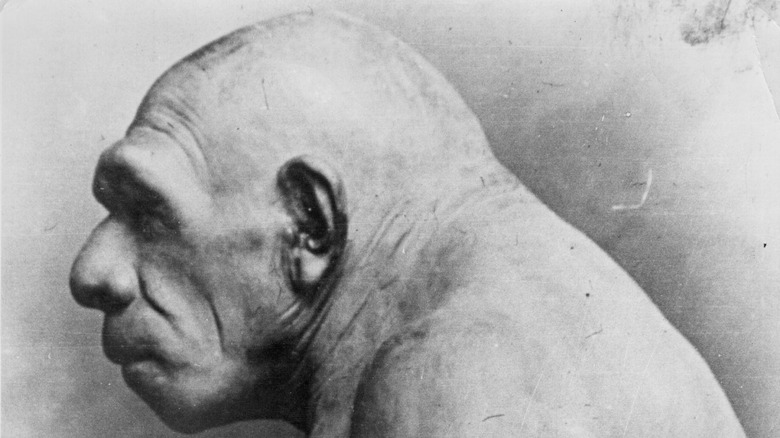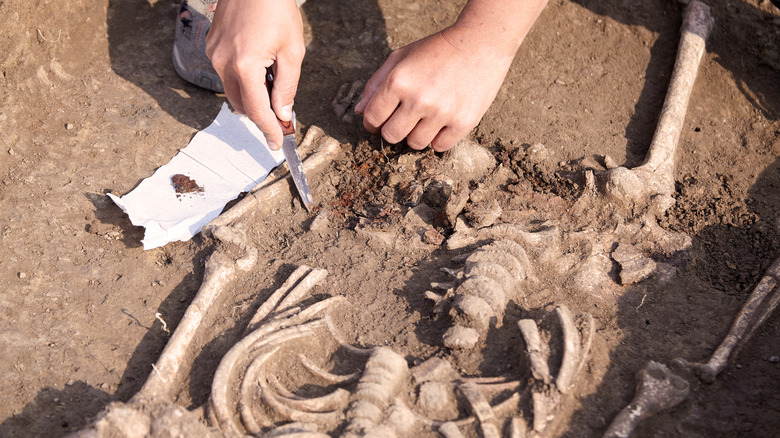Did Neanderthals Really Have Poor Posture?
The classic representation of Neanderthals portrays them with stooped posture, often placed in an evolutionary timeline showing human beings coming into existence via a literal rise from Neanderthals to Homo sapiens. Neanderthal remains were first discovered in 1829 in Engis, Belgium, per the Smithsonian National Museum of Natural History. However, it wasn't until scientists discovered the Neanderthal 1 fossil in Germany in 1856 that anyone realized that the 1829 discovery were also Neanderthal remains. The stereotypical image of Neanderthal with bad posture stems from the La Chapelle-aux-Saints discovery in central France of 1908. As reported by Britannica, studies by anthropologist Marcellin Boule published in 1911-1913 portrayed Neanderthals as "apelike and evolutionarily divergent from modern humans."
Despite this portrayal having been proven to be inaccurate many times over the last 100+ years, the popular image remains. In fact, it's been determined that the individual whose remains were found at the La Chapelle-aux-Saints site had lived for many years with degenerative osteoarthritis in his neck and shoulder and a hip injury, which seemingly contributed to a stooped posture. Per History Extra, Boule's image was further publicized by artist Franz Kupka, whose 1909 reconstruction "Old Man" emphasized an "apelike, stooped creature."
Neanderthals and Homo sapiens: not that different
In 2019, a team of researchers from the University of Zurich published a paper in the Proceedings of the National Academy of Sciences of the United States of America in which they shared the results of their 3D virtual reconstruction of the pelvis and spine of the man whose remains were found at La Chapelle-aux-Saints. Per the paper's abstract, this disproves recent studies of Neanderthal vertebrae that "inferred a hypolordotic, flat lower back and spinal imbalance for them," which the authors see as part of a trend to continue viewing Neanderthals as "less human" than homo sapiens when there are actually few if any differences in anatomy and behavioral capacities.
In an interview with Sci-News, the paper's lead author, Dr. Martin Haeusler, noted that his team's discovery disproves recent theories that Neanderthals lacked the S-shaped spines that make upright posture possible. Said Haeusler, "we discovered that the sacrum was positioned in the same way as in modern humans. This led us to conclude that Neanderthals possessed a lumbar region with a well-developed curvature." The virtual reconstruction allowed the researchers to see and consider what the man's posture would have been both before and after the effects of spinal osteoarthritis. Per Haeusler: "On the whole, there is hardly any evidence that would point to Neanderthals having a fundamentally different anatomy."

